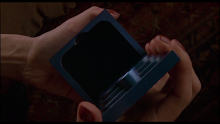In 1964, Stanley Kubrick asked MGM for 6 million dollars to create “the best and most realistic science fiction movie ever made”. 6 million dollars in 1964 was the largest sum Hollywood could round up. The budget exceeded 10 million dollars. It took 3 years and the vast majority of MGM’s studios in England for the film to be finished and shown to the press late March/early April 1968 in Washington, Los Angeles and New York.
These astronomical sums measure up to the greatness of a film that transformed science fiction B-series movies into a genre with endless possibilities.
In 2001 a Space Odyssey the sky is broadened by the depth of the story.
To tell the story, Kubrick assembled an amazing team to be in charge of special effects:
Wally Veevers who had worked on Dr. Strangelove.
Tom Howard, MGM’s special effects expert, who had won an Oscar for his work on Pal’s Tom Thumb.
Con Pederson who had worked on the Walt Disney’s and VonBraun’s series Man in Space. He directed a project with Doug Trumbull called To the Moon and beyond, which drew Kubrick’s attention.
Doug Trumbull’s contributions to 2001 are decisive. He is responsible for the “tunnel of light” sequence.
But there were a lot more people who contributed to the special effects of the film.
For exemple, Brian Johnson, who later won an Oscar for his work on Alien, or Zoran Perisic who made Superman fly.
The team had to invent new techniques as well as exploit those already discovered in order to give the spaceship models a touch of realism.
Veevers created a starry sky using sheets of metal painted black with tiny holes illuminated from behind. He wanted to film the spaceships and the stars at the same time, but his method failed.
Stars were then painted onto a black background (using a toothbrush) and photographed on the animation desk before being put together with the spaceship shots.
But the procedure is a lot more complex.
1. The spaceships are filmed. The film is developed.
2. Art students project each photogram on a sheet of transparent acetate and use Indian ink to fill in the contours.
3. The sheets are filmed; an animation is created with the spaceships moving on a white background.
4. Thanks to a camera with double layer film, they are able to create the background of stars: the animation on top of the blank film creates the impression of spaceship-shaped shadows on a starry background.
5. They then transferred the original images of the spaceships onto the new background, and the images fit perfectly into the spaceship-shaped shadows.

The space station in orbit

Orion space shuttle

The Earth seen from outer space worried the team. Harry Lange explained, “We had almost no real images from NASA to inspire us.” Researchers agreed the Earth must look very shiny from outer space. « How were we supposed to know that the Earth would look dark blue to the astronauts on the Appolo in 1969, one year after the movie was shot? »
 the discovery
the discovery

The control station sphere measures 1.80 m.

The model is almost 16.50m. long.

The spaceship is supported by steel stilts. The camera, placed on a track dolly, moves slowly along the vessel. The people watching the filming had the impression nothing was happening. Kubrick said the process was like “watching the seconds go by on the face of a clock.” The art of « motion control » was born on the set of 2001.
A scene playing on depth of field:


A meteorite passing.

Man no longer looks at the stars, he becomes a part of them.

The famous monolith.


A row of stars and planets in infinite depth.










ghd hair straighteners
RépondreSupprimermichael kors factory outlet
ralph lauren uk
football shirts
tory burch outlet
michael kors factory outlet
pandora jewelry
basketball shoes
barbour coats
replica handbags
north face jackets
nfl jerseys wholesale
ugg boots
michael kors outlet
moncler jackets
michael kors handbags
ugg boots
michael kors outlet store
canada goose outlet
asics
canada goose coats
the north face outlet
cheap oakley sunglasses
cheap nba jerseys
canada goose outlet
oakley sunglasses
longchamp handbags
hermes belt
cheap nfl jerseys
oakley
ugg australia
snow boots
the north face outlet store
soccer jerseys
timberland boots
the north face uk
oakley sunglasses
barbour coats
true religion jeans
rolex watches
cai20151024
Smm Panel
RépondreSupprimerSMM PANEL
iş ilanları
İnstagram Takipçi Satın Al
https://www.hirdavatciburada.com/
Www.beyazesyateknikservisi.com.tr
servis
Tiktok hile indir
Good content. You write beautiful things.
RépondreSupprimertaksi
korsan taksi
hacklink
mrbahis
mrbahis
sportsbet
vbet
vbet
hacklink
salt likit
RépondreSupprimersalt likit
42Z6NU
resimli magnet
RépondreSupprimerresimli magnet
çerkezköy çatı ustası
silivri çatı ustası
dijital kartvizit
ZX1J
silivri çatı ustası
RépondreSupprimerfal baktır
indirmeden oynanan oyunlar
ünye veteriner
https://yoltransfer.com.tr/
C178
رقم مصلحة المجاري بالاحساء hTbn8mHJW8
RépondreSupprimer